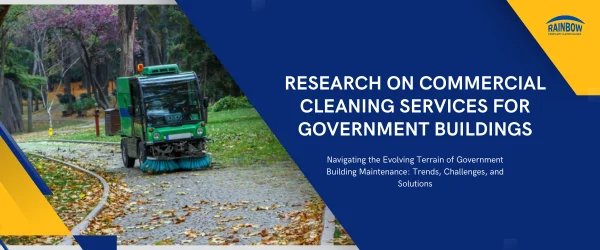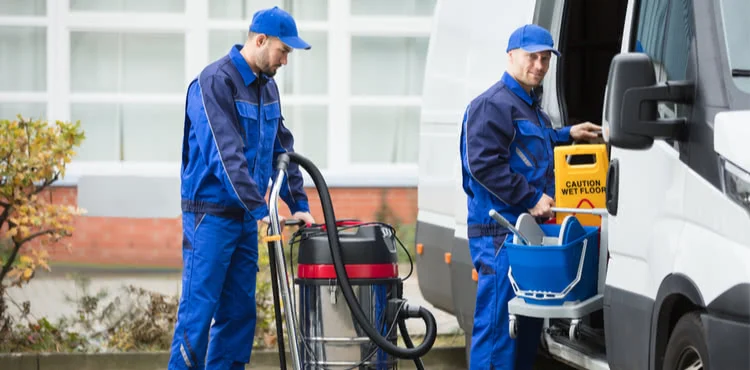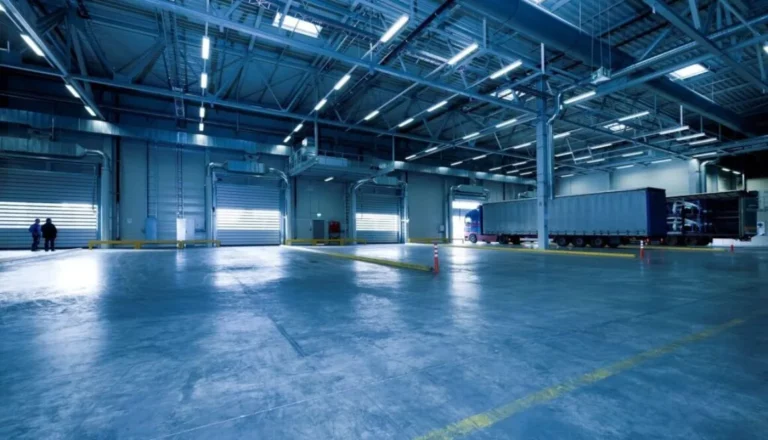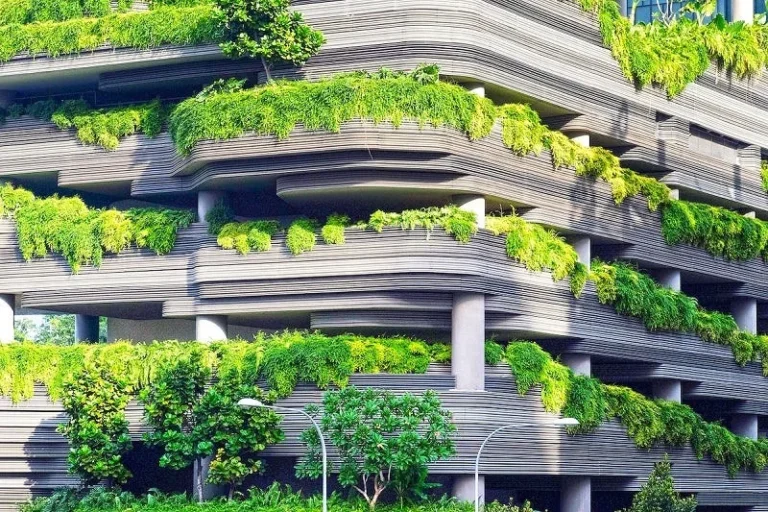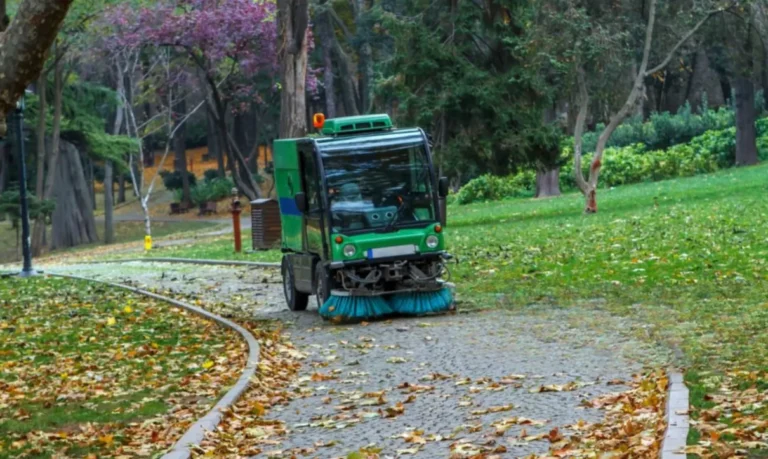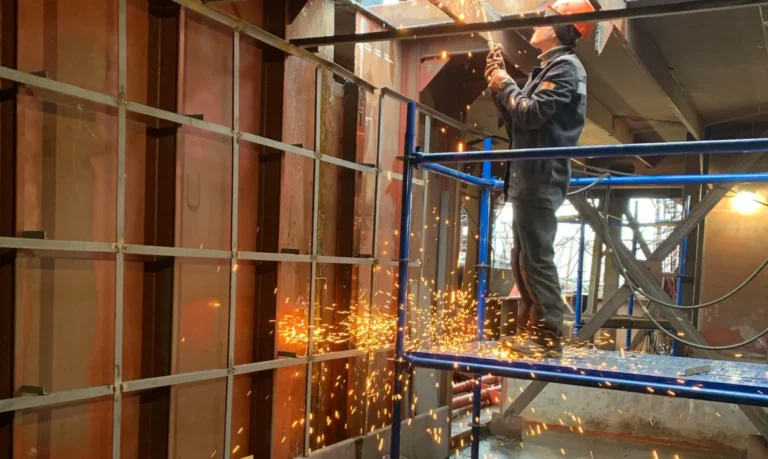Comprehensive Research on Commercial Cleaning Services for Government Buildings in the USA
Comprehensive Research on Commercial Cleaning Services for Government Buildings in the USA
The commercial cleaning industry plays a pivotal role in maintaining the hygiene and operational efficiency of various sectors, including government facilities. This report delves into the specific needs and challenges associated with providing commercial cleaning services to government buildings across the United States. Government facilities, ranging from local municipal offices to federal institutions, require not only general cleaning but also adherence to stringent security protocols and regulatory compliance.
The importance of these services has been underscored by recent updates to cleaning standards by the General Services Administration (GSA), which reflect heightened expectations for cleanliness and sanitation in response to public health concerns. Moreover, the integration of advanced cleaning technologies and the emphasis on sustainability are reshaping the landscape of commercial cleaning services in government settings.
This introduction sets the stage for a comprehensive exploration of the commercial cleaning services industry as it pertains to U.S. government buildings, highlighting key players, market dynamics, regulatory frameworks, and emerging trends that influence service delivery and operational standards. Through this report, stakeholders and service providers will gain insights into the complexities and opportunities within this niche segment of the commercial cleaning market.
Table of Contents
- Current Trends in Commercial Cleaning for Government Buildings
- Adoption of Green Cleaning Practices
- Integration of Advanced Technologies
- Enhanced Focus on Health and Safety
- Regulatory Compliance and Standards
- Economic Efficiency and Cost Management
- Challenges and Solutions in Commercial Cleaning for Government Facilities
- Unique Challenges in Cleaning Government Buildings
- Staffing and Employee Retention
- Safety and Compliance
- Technological Integration and Efficiency
- Environmental Sustainability
- Technological Innovations in Government Building Maintenance
- Smart Cleaning Technologies
- Sustainability Practices in Cleaning
- Water Conservation Technologies
- Electrostatic Disinfection Technology
- Data-Driven Cleaning Operations
Current Trends in Commercial Cleaning for Government Buildings
Adoption of Green Cleaning Practices
Government buildings are increasingly adopting green cleaning practices to reduce environmental impact and improve indoor air quality. This shift is driven by a broader governmental commitment to sustainability. Green cleaning involves the use of environmentally friendly products and technologies that are less harmful to the environment and human health. For instance, the use of biodegradable and non-toxic cleaning agents has become more prevalent, aligning with global sustainability trends in the commercial cleaning industry (Cleanfax).
Integration of Advanced Technologies
The integration of technology in commercial cleaning, particularly in government buildings, is a significant trend. Smart cleaning systems, robotics, and automation are being increasingly utilized to enhance the efficiency and effectiveness of cleaning services. For example, robotic vacuum cleaners and automated floor cleaners are deployed to maintain large floor areas in government facilities, ensuring consistent cleanliness with reduced human intervention. This not only improves cleaning standards but also allows for the reallocation of human resources to more critical tasks (Cleanfax).
Enhanced Focus on Health and Safety
Post-pandemic, there is a heightened focus on health and safety in all sectors, including government buildings. This trend has led to an increase in the frequency and depth of cleaning services. Government facilities are investing more in ensuring that their environments are not just clean but also hygienic and safe for both employees and visitors. This includes regular disinfection and sanitization to prevent the spread of viruses and bacteria, a practice that has become a standard expectation in the wake of COVID-19 (360clean).
Regulatory Compliance and Standards
Government buildings must adhere to strict regulatory standards concerning cleanliness and safety. This compliance has driven the need for commercial cleaning services that not only meet but exceed regulatory requirements. Agencies such as the Occupational Safety and Health Administration (OSHA) and standards like Leadership in Energy and Environmental Design (LEED) influence cleaning protocols in government facilities. Compliance with these regulations ensures that cleaning practices contribute to the overall health and safety environment, which is critical in government settings (Tennantco).

Economic Efficiency and Cost Management
With the increasing pressure on government budgets, there is a growing focus on economic efficiency and cost management in commercial cleaning services. Government buildings are looking for ways to reduce cleaning costs without compromising quality. This has led to innovative approaches such as customizable cleaning plans that allow facilities to optimize cleaning schedules based on actual usage and traffic rather than fixed schedules. Such measures not only ensure efficient use of resources but also help in managing the total cost of building maintenance more effectively (Cleanfax).
These trends indicate a dynamic evolution in the commercial cleaning services sector for government buildings, driven by technological advancements, regulatory requirements, economic considerations, and a heightened focus on health and safety. As these trends continue to develop, they will shape the future of how government facilities approach and manage cleaning and maintenance operations.
Challenges and Solutions in Commercial Cleaning for Government Facilities
Unique Challenges in Cleaning Government Buildings
Government buildings, due to their public nature and high traffic, face unique cleaning challenges that differ significantly from other commercial spaces. The need for heightened security, adherence to strict regulatory standards, and the necessity to maintain a pristine public image are paramount. For instance, the cleanliness of these facilities directly impacts public perception and trust in governmental operations (Stratus Building Solutions).
Staffing and Employee Retention
A significant challenge in the commercial cleaning industry, particularly in the context of government facilities, is staffing. About 61% of contractors identify staffing as a critical risk to achieving growth goals, with an ongoing skilled labor shortage affecting the industry (Facilities Management Advisor). Solutions to this issue include offering competitive salaries, as 86% of businesses surveyed plan to raise wages to attract and retain talent. Additionally, focusing on employee training and career development can enhance retention and ensure a higher standard of cleaning.
Safety and Compliance
Government facilities must adhere to stringent safety standards to protect both the cleaners and the building occupants. The Occupational Safety and Health Administration (OSHA) provides a list of standards and procedures that must be followed, especially when handling cleaning chemicals (Commercial Cleaning Atlanta). Ensuring compliance with these regulations is crucial for avoiding legal repercussions and ensuring the safety of all parties involved.

Technological Integration and Efficiency
Adopting new technologies can significantly enhance the efficiency and effectiveness of cleaning services in government buildings. About 46% of commercial cleaning contractors expect emerging technologies like robotics to revolutionize the industry (Facilities Management Advisor). Implementing software solutions for scheduling, invoicing, and supply chain management can also ease operational burdens. For example, 62% of respondents have reported enhanced capabilities and efficiencies using business management software.
Environmental Sustainability
The push towards green cleaning practices presents both a challenge and an opportunity for commercial cleaning services in government buildings. While the transition requires overcoming initial hurdles such as cost concerns and doubts about efficacy, the long-term benefits include reduced environmental impact and compliance with increasing regulatory demands for sustainability (Vanguard Cleaning Systems). Engaging the community and fostering a culture of environmental responsibility are essential steps towards embracing sustainable practices.
By addressing these challenges with strategic solutions, commercial cleaning services can improve their operations and meet the high standards required for maintaining government facilities. This not only enhances their business prospects but also contributes to the overall functionality and image of governmental institutions.
Technological Innovations in Government Building Maintenance
Smart Cleaning Technologies
The integration of smart technologies into government building maintenance has significantly enhanced operational efficiency and effectiveness. Smart cleaning solutions, such as automated robots and IoT-enabled devices, are increasingly being adopted to perform routine cleaning tasks. These technologies not only improve cleaning standards but also reduce the workload on human staff, allowing them to focus on more critical maintenance tasks. For instance, robotic vacuum cleaners and automated floor scrubbers can be programmed to operate during off-hours, ensuring minimal disruption to daily activities within government facilities (MetroKleen).
Sustainability Practices in Cleaning
Sustainability is a core component in the maintenance of government buildings, aligning with federal mandates to enhance environmental stewardship. The use of green cleaning products and practices is prevalent, driven by the Guiding Principles for Sustainable Federal Buildings which advocate for the reduction of environmental impact through sustainable cleaning methods. These principles encourage the use of products that minimize waste and are less harmful to the environment, thereby supporting the federal government’s commitment to sustainability (EPA).
Water Conservation Technologies
Water conservation is a critical aspect of sustainable building maintenance. Recent advancements in cleaning technology have introduced water-efficient cleaning systems that significantly reduce water usage without compromising cleaning effectiveness. For example, new floor cleaning machines equipped with water-recycling capabilities can clean effectively while using a fraction of the water typically required, thus supporting the federal goals of protecting and conserving water resources as outlined in the Guiding Principles for Sustainable Federal Buildings (Sustainability.gov).
Electrostatic Disinfection Technology
The adoption of electrostatic disinfection technology in government buildings has revolutionized the approach to maintaining hygienic environments, especially important in the wake of health crises such as the COVID-19 pandemic. Electrostatic sprayers efficiently sanitize surfaces by producing a fine mist of disinfectant particles that evenly coat surfaces, ensuring comprehensive disinfection. This technology not only improves the health and safety of building occupants but also enhances the efficiency of the cleaning process by covering larger areas in shorter times (Janitorial Manager).
Data-Driven Cleaning Operations
The implementation of janitorial management software in government building maintenance marks a shift towards data-driven operations. This technology enables facility managers to streamline various aspects of cleaning services, from scheduling and tracking to inventory management and regulatory compliance. By leveraging data, government facilities can optimize cleaning schedules based on building usage patterns and track the effectiveness of cleaning protocols, thereby ensuring a high standard of cleanliness and operational efficiency (Janitorial Manager).
These technological innovations and sustainability practices not only enhance the cleanliness and usability of government buildings but also align with broader federal objectives of environmental responsibility and resource conservation. By continuing to adopt and integrate these advanced technologies, government facilities can maintain high standards of cleanliness and sustainability, setting a benchmark for commercial cleaning practices nationwide.

